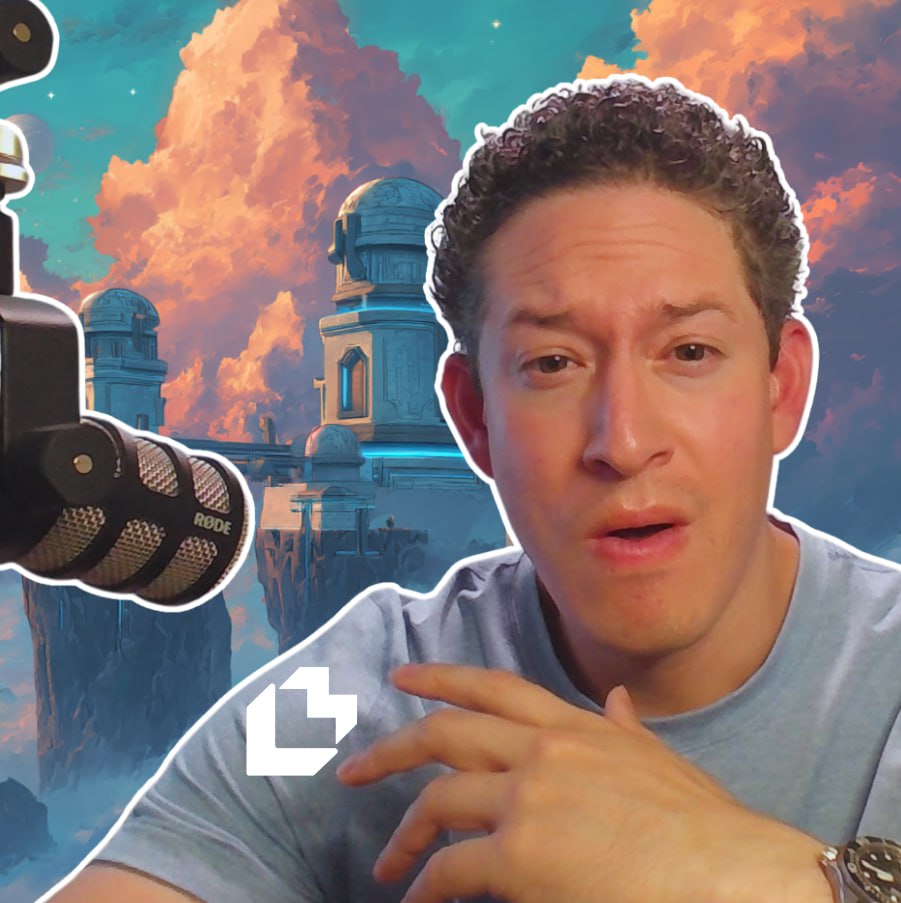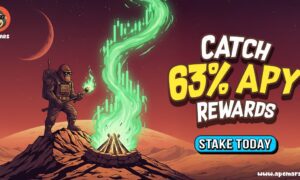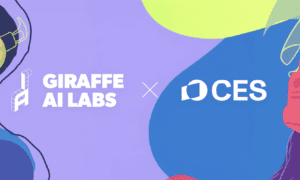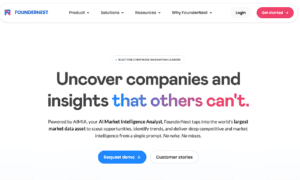The Web3 industry has rapidly evolved from a niche experiment into a global movement reshaping finance, technology, and digital ownership. As decentralized platforms challenge traditional systems, the space is being defined by builders who blend technical expertise with bold vision. One of those leading voices is Aztec Amaya, a name that’s become synonymous with innovation in the Web3 space. As the founder of LitVM, Chief Strategy Officer at Lunar Digital Assets, and co-host of the popular QuickSwap podcast The Aggregated, Aztec wears many hats, and wears them well. From helping shape the rise of Polygon to launching cutting-edge infrastructure on Litecoin, he has been at the forefront of blockchain’s biggest shifts. In this exclusive interview with TechBullion, he opens up about the wins, the lessons, and where Web3 is heading next.
1) Please tell us more about yourself?
My name is Aztec Amaya and I am a Web3 OG. These days, I am splitting most of my time between three major roles: the founder of LitVM, CSO at Lunar Digital Assets, and Co-Host of the acclaimed Web3 podcast QuickSwap’s “The Aggregated”.
Each of these roles is entirely unique, so I’m always absorbing new information and working with different communities. LitVM is Litecoin’s first EVM Layer 2 chain building out a vibrant ecosystem for LTC holders that want optional utility, whereas Lunar Digital Assets (LDA) is full-stack blockchain venture studio that brings in the best and brightest projects in Web3 and brings them to market to fulfill their potential.
Lastly, I’m also a bit of a crypto KOL myself – that’s more of a fun way for me to give back and talk about this wild space as the co-host of QuickSwap’s “The Aggregated”. It’s a blast tuning in every Friday to connect with awesome communities and countless industry leaders from different projects and ecosystems across the Web3 space.
At my core, I’m just someone who’s genuinely excited about the potential of decentralized technologies and freedom. I spend a lot of time reading and learning from other people’s honest insights. In everything I do, my number one goal is always to help people find their way through Web3 and enjoy the ride.
2) You have played a key role in the success of both QuickSwap and Polygon. What were some of the critical decisions or innovations that helped shape those platforms into what they are today?
Looking back at those early days with QuickSwap and Polygon, that was an epic time. For me and the team at LDA, it was about getting away from the noise and focusing on what truly mattered for the long game.
With Polygon, one of the key decisions was their initial commitment to Ethereum compatibility, while drastically improving scalability and keeping fees super low. But the real game-changer was the rebrand from Matic to Polygon – which was my idea. That wasn’t just a name change – it was a shift to a much broader vision to become Web3’s leading scalability stack. That broader scope really helped the community get off the ground, and brought in a much wider array of developers and projects who saw the bigger picture.
For QuickSwap, it was a similar story of execution and understanding what the Polygon community really needed. Alongside kicking off the first DeFi summer, the decision to launch on Polygon early to take advantage of their low fees and fast transactions was key. QuickSwap embraced the AMM (Automated Market Maker) model and built out strong liquidity incentives to attract users and capital. The evolution to V3 and bringing in concentrated liquidity was another smart move that made trading even more efficient. With both projects, LDA was consistently placing focus on user experience, listening to community feedback, and innovating fearlessly.
3) Lunar Digital Assets has been behind some of the most impactful projects in Web3. How do you identify early-stage opportunities that have the potential to become market leaders?
For me and the rest of the team at LDA, spotting Web3 leaders really comes down to the fundamentals – and that means getting underneath the hype and the noise. We always start by looking at the tech and product-market fit. The Web3 market evolves at light speed, and it’s so important to be building real solutions to actual problems – not just chasing trends. And you bet we’re going through new tech with a fine-tooth comb. I’m a KOL and I’m all for short-form content, but I also spend a lot of time doing deep reading in whitepapers, reviewing technical documents, and analyzing tokenomic models. It all has to make sense. Finally, a genuine community and a long-term plan are key; we’re here to back founders that truly move Web3 forward.
4) You co-host one of the top-ranked crypto podcasts QuickSwap’s “The Aggregated”. How has that platform helped shape your voice in the industry, and what unique value do you strive to bring to your listeners?
Being on QuickSwap’s ‘The Aggregated’ has been a massive part of my journey, really. It’s funny, when you’re just tweeting or writing, it’s a one-way street. But being on a podcast really forces you to engage, to listen to different viewpoints. That constant back-and-forth, dissecting complex topics with smart guests along with my co-host Roc, has definitely sharpened how I articulate things and even how I think about the industry. It’s taught me to explain complex ideas in a way that makes sense to experts and newcomers just arriving on the scene.
As for what we try to bring to listeners, it’s pretty simple: real talk. The crypto space can be full of noise and tribalism, and we try to cut through all that. On QuickSwap’s “The Aggregated”, we don’t shy away from tough questions or differing opinions. Our goal is to offer unfiltered, honest conversations that demystify Web3, break down jargon, and give people actionable insights. We want to help folks understand what’s actually happening, why it matters, and maybe even have a bit of a laugh along the way – without taking ourselves too seriously. It’s about building a space where everyone feels like they’re part of a genuine conversation, learning, laughing, bonding, and growing together.

5) From business development to new product incubation, your work spans a wide spectrum. How do you prioritize and manage such a broad scope of responsibilities while still executing at a high level?
That’s a good question because it really is a lot to juggle, especially in Web3 where things move so fast. Honestly, it boils down to a few core things that help keep me focused and effective. First, it’s about keeping priorities in focus. I always ask myself what one thing will have the biggest impact for my current roles, and that’s where I place the majority of my energy. Second, I lean quite heavily on my teams; you simply can’t do it all yourself, so empowering others is crucial. Fortunately, I’ve got an amazing group around me at LitVM, LDA, and at home with my family – nothing is more important than that. You have to have a strong, supportive structure around you or the rest crumbles. Finally, it’s about smart time management – that means blocking out time for deep, uninterrupted work.
6) QuickSwap became a flagship DEX on Polygon during a critical growth period. What were the biggest challenges you faced during its launch and expansion, and how did your team overcome them?
QuickSwap’s journey to become a flagship DEX on Polygon was definitely an exciting challenge. Early on, bootstrapping liquidity was a massive hurdle. Without enough of it, trading just isn’t efficient, and users look elsewhere. For us, QuickSwap’s edge had a lot to do with its first-mover advantage, where Polygon’s low fees made for an attractive environment for liquidity providers. We went heavy on liquidity incentives early on, which brought in the capital needed to get things moving. In Web3, network effects cannot be understated. Another big one was maintaining a super smooth user experience and ensuring the tech scaled, even as usage exploded. Ultimately, it was about strategic incentives, solid tech, and always putting our users and community first.
7) The crypto space is evolving quickly, with trends like DeFi, gaming, and AI converging. What areas of Web3 do you believe are most ripe for innovation in the next 12–24 months?
Yes, the crypto space is just racing forward at light speed (as usual), and it’s exciting to think about what’s next. For me, looking at the next 12 to 24 months, the biggest opportunities are in building out Litecoin’s first ZK omnichain for LTC, one of the space’s truest blue-chip assets. We’re talking about unlocking the immense value of Litecoin and extending its utility beyond just value storage and payments.
In addition to tapping into Litecoin’s Proof-of-Work consensus for robust security, smart contract capability opens the floodgates for DeFi and other complex applications. And truthfully, that’s where we’re really focused with LitVM: launching the first EVM-compatible Layer 2 right on top of Litecoin. LitVM is designed to transform Litecoin into a fully programmable ecosystem, enabling everything from advanced payment infrastructure and real-world assets (RWAs) to seamless DeFi and on-chain culture. By bringing programmability and a vast developer community to LTC, I see an explosion of innovation right around the corner.
I’ve always had a passion for music. So, I’ve also begun to explore the possibilities of scaling Web3 music and opportunities for both local and mainstream musicians in this space. The music industry is a very large industry that you don’t hear too much about in Web3 anymore. I’ve realized after following the successful Web3 folk musician Violetta Zironi and talking with the infamous brutal metal musician Marshall Beck that Web3 could benefit a lot from democratizing the music industry. We’re always talking about mainstream adoption, so music might be another way to make it happen with RWAs. I’ve put some of my focus into exploring this more recently.
8) Lunar Digital Assets has a reputation for launching high-visibility projects. What’s your approach to marketing and community building in a decentralized ecosystem?
Building high-visibility projects in Web3 requires a different mindset compared to traditional marketing. Our approach at LDA is fundamentally community-focused; we view our community not just as an audience, but as active participants and true evangelists for our projects. Transparency and consistent, honest communication are non-negotiable for building genuine trust in a decentralized ecosystem.
As communicators, we focus on clearly articulating the real utility and value behind a project, cutting through the noise to show why it truly matters. Incentivization plays a key role too, whether it’s through token rewards, exclusive access, or simply empowering contributors with freedom tech. We also prioritize active, organic engagement across platforms like Telegram and X by hosting AMAs and supporting open, honest, and meaningful discussion. Ultimately, it’s about nurturing a strong, educated, and passionate community that amplifies your marketing in ways no campaign will ever be able to.
9) For entrepreneurs and builders entering the Web3 space, what are the top three lessons you’ve learned that they should keep in mind?
That’s a question I think about a lot, having seen so many projects come and go. For anyone diving into Web3, I’d say there are three big lessons to keep in mind. First, solve a real problem – don’t just follow a trend. Trends change quickly, whereas problems continue to demand solutions. Second, your community is everything, and if you’re not genuine they’ll see through the act. It isn’t just about marketing; it’s about transparent communication, active engagement, and truly empowering your early users. Treat them as partners – not customers. And last but not least, prioritize security and sustainable design from day one. Smart contract audits are non-negotiable, and your project’s tokenomics must be meticulously planned for the long haul. Don’t rush to launch if it means compromising on the fundamentals. They’ll catch up with you when you least expect it.
10) You have consistently pushed boundaries in Web3. What’s next for you personally, and what exciting developments can we expect from Lunar Digital Assets in the near future?
You know, it feels like we’re always looking ahead in this space. Personally, I’m doubling down on building, especially with LitVM. We’re beyond excited about bringing a full EVM ecosystem to Litecoin, unlocking DeFi, RWAs, and more on a truly decentralized blue-chip asset, and that’s where a lot of my personal energy is focused right now. The Litecoin meta is just getting started.
As for Lunar Digital Assets, you can expect us to continue pushing boundaries by incubating projects that focus on real-world utility and driving mass adoption. One thing is certain though, You can count on us to explore new frontiers before the market identifies them. We’re always focused on where the market is going to be tomorrow – not where it is today. I hate to keep you guessing, but that’s all I can say for now. It’s been a pleasure.



































